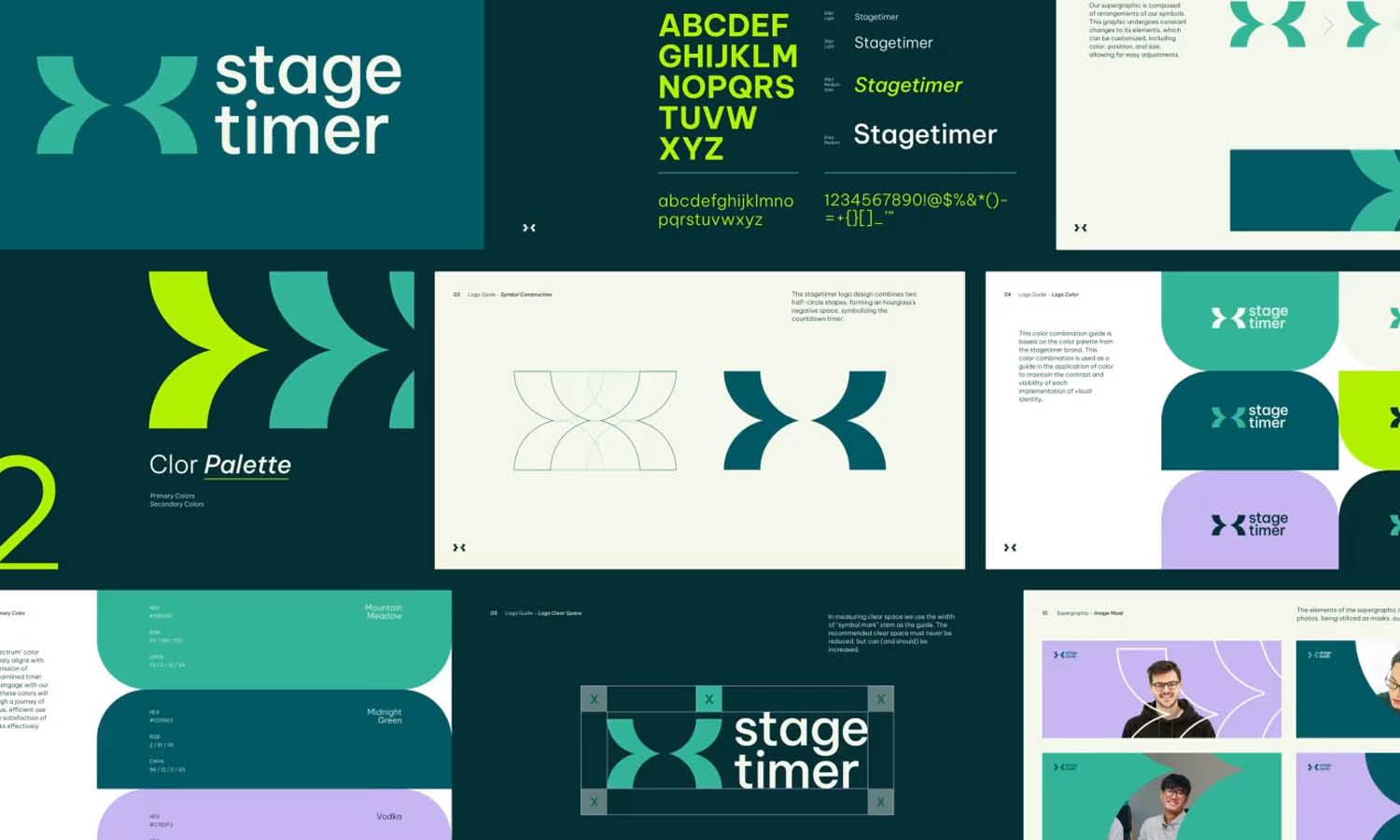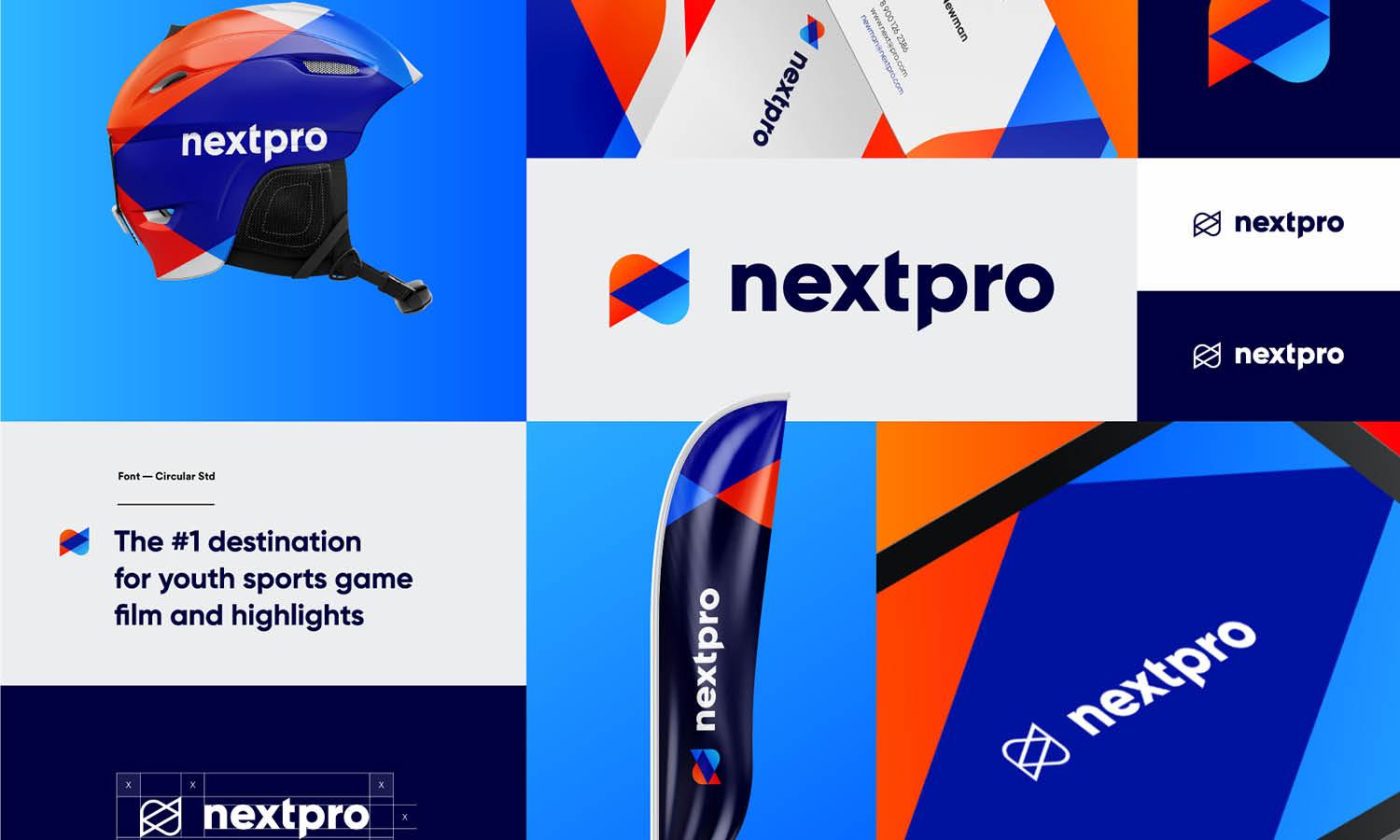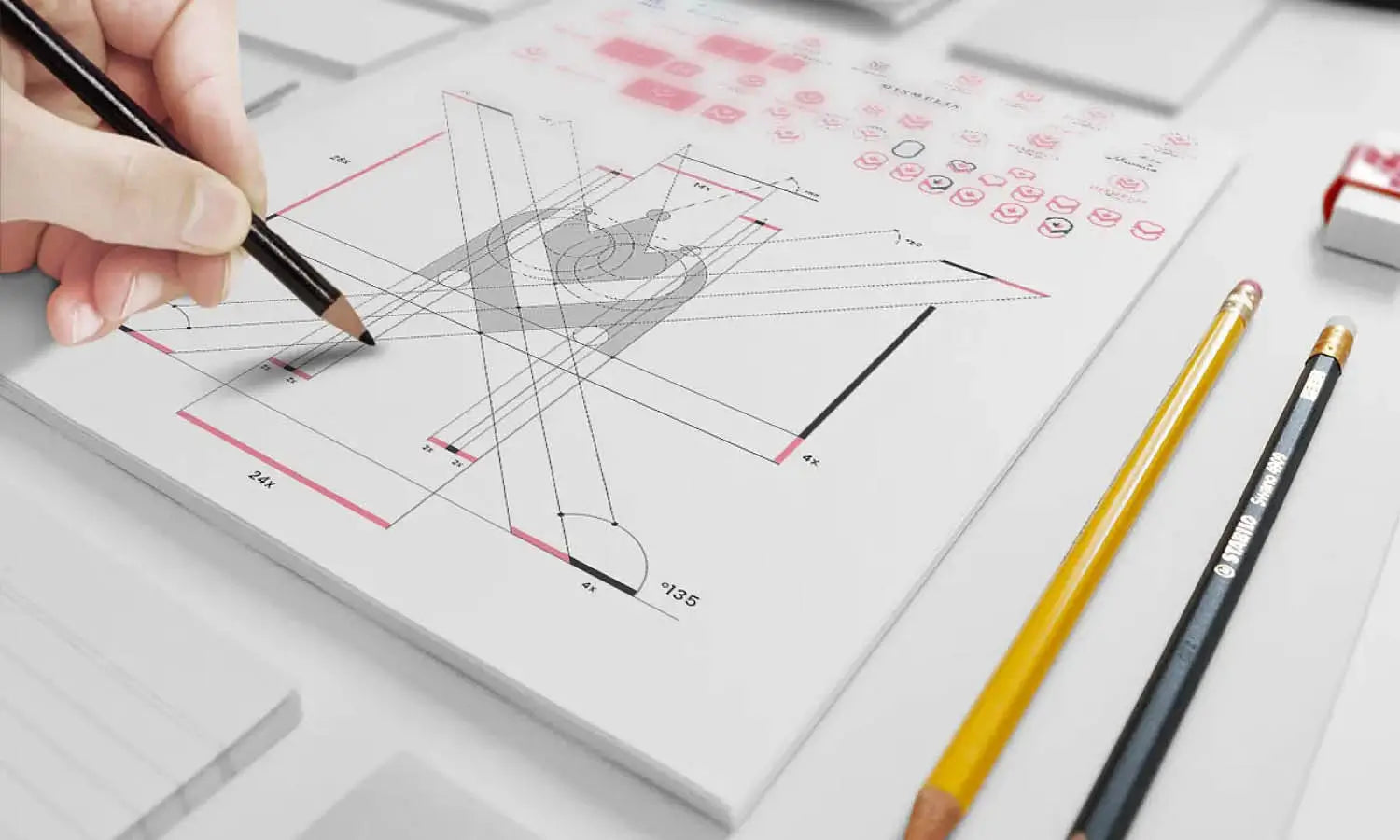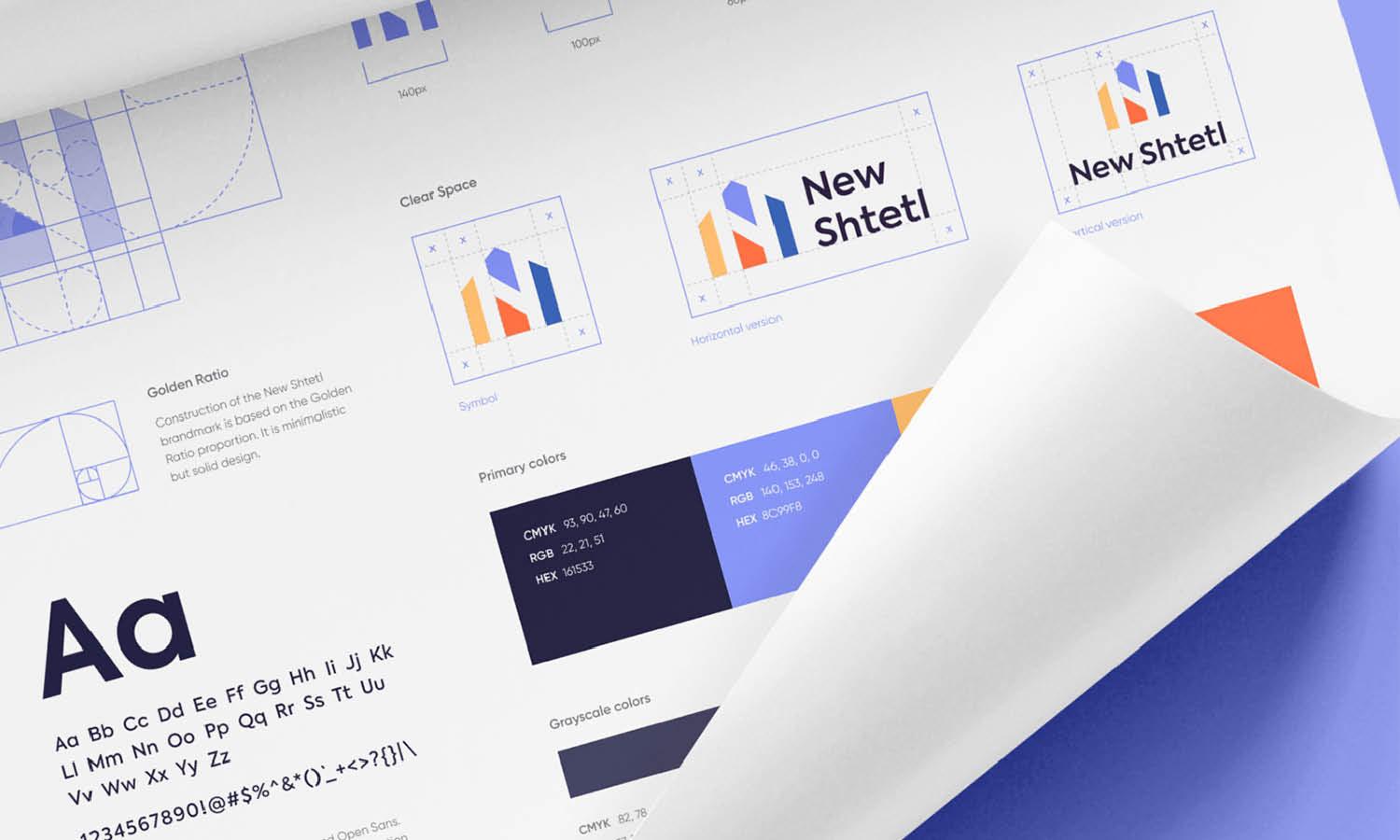How To Maintain Quality in Logo Design Scaling

Source: Mental Health I Logo Design & Brand Identity, Dribbble, https://dribbble.com/shots/20387322-Mental-Health-I-Logo-Design-Brand-Identity
In the world of branding, the scalability of a logo is crucial to maintaining its impact across various media and sizes. A well-designed logo should hold its quality, clarity, and effectiveness, whether it appears on a small digital watch face or a massive billboard. This requires a strategic approach to logo design, focusing on adaptability and technical perfection. The key to success lies in understanding the nuances of quality, logo design scaling, ensuring that the logo not only scales efficiently but also communicates the brand’s message consistently at every size.
As designers, it is imperative to harness the best practices and tools to create versatile logos that withstand the challenges of scaling. This article will delve into the essential techniques and considerations needed to maintain high-quality visuals in logo scaling, providing designers with actionable insights to enhance their work. Whether you are a seasoned professional or a budding designer, mastering these elements will equip you with the ability to deliver logos that maintain their integrity and appeal in any context.
Understand Vector Graphics
In the realm of logo design, vector graphics are foundational for ensuring quality during scaling. Unlike raster images that are made up of pixels and can lose clarity when resized, vector graphics use mathematical equations to define each component of the design. This allows vectors to be infinitely scaled up or down without any loss of quality. For logo scaling, this characteristic is invaluable as it guarantees that the logo maintains its sharpness and detail, whether it's printed on a small business card or a large outdoor banner.
Vector-based software like Adobe Illustrator is essential for creating scalable logos. These tools provide designers with the flexibility to adjust shapes, lines, and colors with precision, ensuring the logo looks perfect at any size. Additionally, vector files are generally smaller in file size, making them easier to handle and quicker to load on various platforms.
When designing a logo, starting with vectors ensures that the final product is not only visually appealing but also technically robust enough to handle different scaling scenarios. This approach aligns perfectly with maintaining high quality in logo design scaling, providing a seamless visual experience across all brand touchpoints.
Implement Grid Systems
Using grid systems in logo design is a strategic approach that enhances the scalability and visual impact of a logo. A grid is a framework comprising multiple intersecting lines that help designers maintain consistency and alignment throughout the creative process. This structured setup aids in achieving balanced and proportional designs that hold their aesthetic appeal at any size.
Grids serve as a guide that simplifies the scaling process. They ensure that all elements of the logo, such as icons, text, and images, are well proportioned and uniformly spaced, regardless of how much the logo is enlarged or reduced. This methodical approach eliminates guesswork, enabling designers to make calculated adjustments that uphold the logo’s integrity across various mediums.
Moreover, implementing a grid system instills a sense of harmony and coherence in the design. It allows every component of the logo to function independently and yet cohesively, which is crucial when the logo is viewed on different scales. Whether it's a minimalistic logo or a complex emblem, grids help in crafting designs that are aesthetically pleasing and functionally effective.
Choose Scalable Typography
Selecting the right typography is essential for maintaining quality in logo design scaling. Scalable typography ensures that the text within the logo remains legible and aesthetically pleasing at any size. When choosing typefaces for a logo, it is crucial to opt for fonts that are clear and versatile across various display sizes and mediums.
Fonts with simple, clean lines typically scale better than those with intricate details, which may become muddled or lose clarity when the size is reduced. Sans-serif fonts, for example, are often a popular choice for their readability and modern appearance at both large and small scales. Additionally, it’s important to consider the weight of the font. Medium and bold weights tend to maintain their form better at smaller sizes compared to lighter weights, which might fade or become less distinct.
When integrating typography into a logo design, also pay attention to the spacing between letters and words, known as kerning and tracking. Proper adjustment of these elements can greatly impact the readability and overall visual impact of the logo as it scales. Well-kerned typography will keep the text structured and unified, no matter the size.

Source: Paul von Excite, Jobseeker Branding, Dribbble, https://dribbble.com/shots/17240380-Jobseeker-Branding
Maintain Aspect Ratios
Maintaining the aspect ratio of a logo during scaling is crucial for preserving its original design integrity and visual impact. An aspect ratio refers to the proportional relationship between the width and height of the logo. Keeping this ratio consistent ensures that the logo does not become distorted or skewed, regardless of how much it is resized.
When resizing a logo, it’s important to lock the aspect ratio settings in the design software being used. This function prevents unintentional stretching or compressing of the logo, which can lead to a loss of quality and professional appearance. Consistent aspect ratios are especially important in responsive design, where a logo must adapt to different screen sizes and resolutions without altering its shape.
Moreover, maintaining aspect ratios contributes to the brand’s consistent visual identity. It allows the logo to be instantly recognizable and reliable, which is vital for building trust and recognition with the audience. Whether the logo appears on a smartphone screen, a web banner, or a large poster, it should always represent the brand accurately.
Use High-Resolution Files
When scaling logo designs, the use of high-resolution files is crucial to maintain image quality across various outputs. High-resolution files provide a larger amount of detail and clarity, ensuring that the logo remains sharp and defined, regardless of the size at which it is displayed. This is particularly important for print media, where high-resolution images are necessary to avoid pixelation and blurring.
For designers, creating logos in high resolutions and using file formats that do not compress or lose quality is essential. Formats like TIFF, SVG, and PDF are preferred for their ability to retain high quality when the logo is enlarged. These formats ensure that every curve and line in the logo is preserved, making the design scalable to larger dimensions without degradation.
It is also advisable to work at a resolution that is at least 300 DPI (dots per inch) for print applications. This higher dpi rate helps in maintaining the crispness and detail of the logo as it is scaled up for large format prints, such as banners or billboards.
Incorporating high-resolution files from the beginning of the design process can save time and resources in the long run. It prevents the need for redesigns or adjustments when the logo needs to be used at larger scales, ensuring consistency and quality in every instance the brand is represented.
Simplify the Design
Simplifying the design of a logo can significantly enhance its scalability and effectiveness. A simple design minimizes the risk of elements becoming unrecognizable or losing impact when the logo is reduced to smaller sizes. This is particularly important in today's digital age, where logos must be legible on a variety of platforms, from smartphone icons to large billboards.
To simplify a logo design, focus on reducing the number of colors, shapes, and fonts. This not only makes the logo more versatile across different mediums but also strengthens brand recognition. A clean and concise logo is easier for the audience to remember and identify at a glance, which is crucial for effective branding.
Avoid using intricate patterns or textures that may blend together or become indistinct when viewed at smaller sizes. Instead, opt for bold lines and clear, distinct colors that stand out. This approach ensures that the logo maintains its integrity and continues to effectively communicate the brand’s identity, no matter the scale at which it is viewed.
Moreover, a simplified logo is often more timeless and less likely to require frequent updates. This longevity can be beneficial from a branding perspective, as it provides stability and consistency in how the brand is perceived over time.
Test at Different Sizes
Testing a logo at different sizes is essential to ensure that it maintains its visual integrity and effectiveness across all potential applications. This process allows designers to identify and correct any issues that may arise when the logo is scaled down to smaller sizes or enlarged for larger formats. It's crucial for ensuring that the logo remains legible, aesthetically pleasing, and consistent with the brand's identity no matter where it appears.
During the testing phase, designers should evaluate the logo on various digital and physical mediums, such as mobile screens, desktops, business cards, and large banners. This diversity in testing helps to ensure that the logo's elements, such as type, colors, and images, are impactful and clear in every context.
One effective method for testing is to print the logo in different sizes and observe it from various distances. This real-world application can reveal unexpected changes in appearance, such as blurred lines or color blending, which might not be noticeable on a computer screen.
Additionally, using tools like digital mockups can aid in visualizing how the logo performs on different digital platforms and against different backgrounds. This is particularly useful for adjusting the logo’s scalability, ensuring it can adapt to the wide range of formats required in today’s multimedia landscape.

Source: Azharfani, Branding Kit for Property Real Estate Company, Dribbble, https://dribbble.com/shots/21667249-Branding-kit-for-property-real-estate-company
Opt for a Modular Design
Opting for a modular design can greatly enhance the scalability and versatility of a logo. Modular logo design involves creating a logo that consists of several distinct but cohesive elements that can be used together or separately without losing the brand's essence. This flexibility allows the logo to be adapted for various uses and sizes, ensuring consistent brand recognition across different platforms and scales.
A modular approach enables designers to adjust the layout, size, and elements of the logo based on its application. For example, a complex logo might include a symbol, wordmark, and tagline that can be stacked, aligned horizontally, or used individually. This adaptability is particularly useful for social media icons, app icons, promotional products, and large-scale advertising.
To implement a modular design effectively, each component of the logo must be strong enough to stand on its own while still maintaining a cohesive look when combined with other elements. Designers should focus on simplicity and clarity in each module to ensure it can be recognized and understood in varying contexts.
Furthermore, a modular logo system allows for easier updates and variations over time. Brands can tweak individual elements without overhauling the entire logo, keeping the branding fresh and relevant while maintaining a consistent visual identity.
Employ Color Wisely
Effective use of color is critical in maintaining the quality of a logo during scaling. Colors play a pivotal role in brand recognition and emotional impact, and they must remain consistent and clear across all sizes and media. When designing a scalable logo, it is important to choose colors that can stand out and remain consistent under different viewing conditions and printing processes.
One key aspect to consider is the use of solid, flat colors as opposed to gradients or complex textures. Solid colors scale down more effectively and are less likely to create issues during the printing process or when displayed on digital screens. This approach ensures that the logo remains legible and visually striking, even when reduced to the size of a favicon or an app icon.
Moreover, it’s essential to test the chosen colors under various lighting conditions and on different backgrounds to ensure that the logo remains effective in diverse environments. This includes checking for color blindness accessibility to ensure that the logo communicates effectively to all segments of the audience.
Additionally, limiting the color palette to a few core colors can help in maintaining consistency and strength across various applications. A simpler color scheme is not only versatile but also economical, reducing printing costs for physical branding materials.
Establish Clear Guidelines
Establishing clear guidelines is essential for ensuring the consistent scaling of a logo. Detailed brand guidelines should encompass all aspects of logo usage, including size, color, spacing, and the contexts in which different variations might be used. These standards help maintain the integrity and recognizability of the logo across various platforms and sizes.
The guidelines should specify the minimum and maximum sizes at which the logo can be displayed, to prevent any distortion or loss of detail. They should also include instructions on the logo's safe area, which is the buffer zone around the logo that must be free from other graphical elements or text to ensure its visibility and impact.
In addition to physical dimensions, brand guidelines should address color specifications, providing CMYK, RGB, and hex codes to ensure color consistency across digital and print media. This is crucial for maintaining the quality and professional appearance of the logo regardless of where it appears.
Moreover, guidelines should clarify the use of different logo versions, such as monochrome or simplified variations, for specific applications where the full-color logo may not be suitable. For instance, when the logo needs to be used on merchandise, small digital displays, or when it needs to be embroidered on fabric.
Conclusion
Maintaining quality in logo design scaling is crucial for preserving a brand's identity across various platforms and sizes. By employing strategies such as using vector graphics, implementing grid systems, choosing scalable typography, and testing the logo at different sizes, designers can ensure that the logo remains impactful and consistent. Wise use of color and clear branding guidelines further support these efforts, enabling logos to adapt seamlessly from digital screens to large-scale prints. Ultimately, a well-scaled logo enhances brand recognition and trust, making it a fundamental aspect of professional logo design.
Let Us Know What You Think!
Every information you read here are written and curated by Kreafolk's team, carefully pieced together with our creative community in mind. Did you enjoy our contents? Leave a comment below and share your thoughts. Cheers to more creative articles and inspirations!
















Leave a Comment